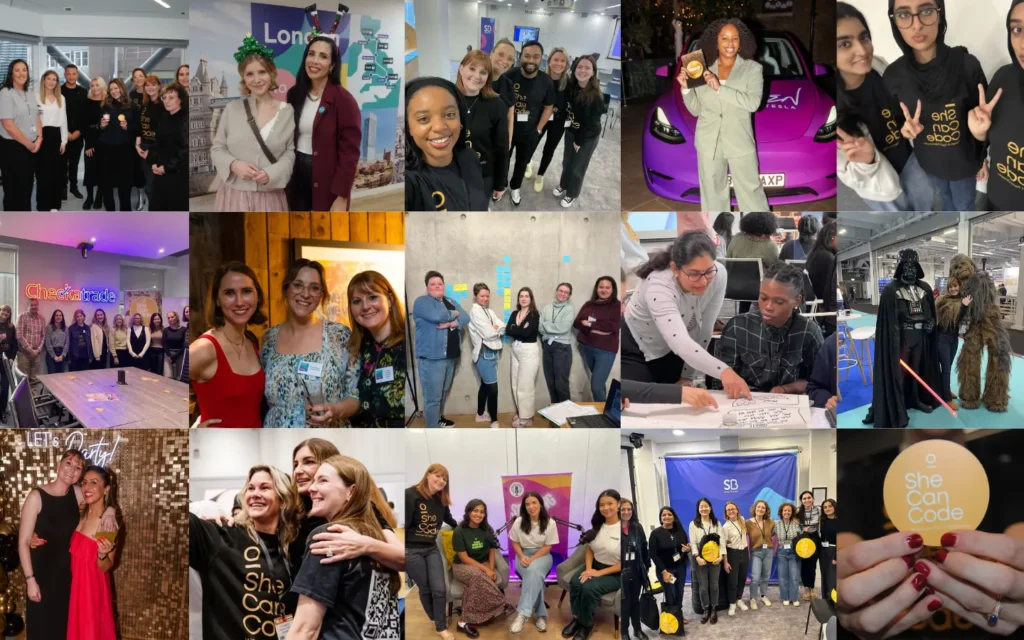First coined by Australian sociologist Judy Singer in the late 1990s, the term neurodiversity refers to variations in the human brain, such as our thinking patterns, learning styles and the way we process information. It was originally used to describe autism but has since broadened to include a whole range of conditions.

We spoke to Emma Doyley, Information Security Manager, MHR, about why companies should be embracing neurodiversity and what tech businesses need to know.
Emma Doyley is primarily responsible for security governance and risk management. With over five years’ experience working within various critical sectors, Emma helped organisations achieve ISO27001, implement security awareness programmes and revolutionise risk management.
She believes that information security should be a priority for every individual and organisation, following the idea that security can wrap around a business and not hinder it. Emma is inspired by the individuals that paved the way to allow her to be where she is now and hopes to inspire the next generation of security leaders.
OVER THE PAST TWO DECADES, THE ‘NEURODIVERSITY MOVEMENT’ HAS WORKED HARD TO RAISE AWARENESS OF NEURODIVERGENT CONDITIONS, BREAKING DOWN MISCONCEPTIONS AND SHIFTING THE WAY NEURODIVERSITY IS UNDERSTOOD AND TALKED ABOUT.
With as many as one in seven people in the UK considered neurodivergent, it’s clear that working environments and roles need to be inclusive to people with alternative thinking styles. Despite this, employers have still got some way to go when it comes to embracing neurodiversity.
UNDERSTANDING DIFFERENCES
The benefits of diversity are well known among companies; a diverse skillset and new and different ways of thinking can unlock creativity, boost innovation and ultimately productivity. However, a study by the Institute of Leadership & Management found that half of leaders and managers would be uncomfortable employing or managing someone who falls within the spectrum of neurodiversity.
Stereotypes and misconceptions continue to blight neurodiversity. For example, people living with Tourette’s syndrome are often expected to have the swearing tic but only 10% do, while autistic people are often thought of as geniuses or socially awkward.
These stereotypes can have a damaging impact on neurodivergent employees, making them less likely to be honest about their traits. What’s more, up to 40% of employees in the tech industry have not opened up about their neurodivergent traits at work.
While neurodivergent individuals can bring lots of different strengths to the table, from problem-solving and analysis to creative insights and visual spatial thinking, making assumptions about what will work for people based on stereotypes and misconceptions is a deeply flawed approach and risks alienating the very individuals businesses hope to attract.
Instead, businesses should work alongside their employees to co-design practices that suit individual needs and preferences and take steps to accommodate – rather than patronise or belittle – any challenges that they may face.
Many organisations already have some form of diversity and inclusion training, so working neurodiversity into an existing programme can be a simple yet effective way to help a business and its managers understand more about neurodiversity. Not only will this help to break down misconceptions, but it will also make neurodivergent employees feel safer opening up to their manager and make it easier for managers and colleagues to understand the type of support they need.
BUILDING THE RIGHT ENVIRONMENT
The challenge facing many businesses will be to understand how to create a working environment that nurtures everyone’s skills and potential.
Neurodivergent employees may face a range of different challenges, including difficulty concentrating, difficulty understanding the order and meaning of words or becoming overloaded with information, but it’s key that everyone is given the same opportunity to do well, and that workplaces are inclusive of everyone’s differences.
Support needs to start from the very outset. Businesses should review their hiring and onboarding process to ensure it’s as inclusive as possible.
Three quarters of dyslexic people believe the recruitment process puts them at a disadvantage and 79% believe the process doesn’t give them the opportunity to demonstrate their true abilities. Job adverts should be free of complicated or fluffy jargon and listing technical skills rather than generic, open-to-interpretation criteria is one way of achieving this. A statement on diversity and inclusion, either on the advert or on the website, will also help people to feel more comfortable about disclosing their neurodiverse traits without fear of judgement.
Often, interviews are a chance for candidates to show off their social skills but it’s important that the structure is free of unconscious bias and gives candidates varied opportunities to show their skill set. For example, autistic candidates may benefit from having the process explained to them ahead of the meeting and being interviewed in a room which isn’t too overwhelming in terms of people or visual stimuli.
But being diverse is much more than a box-ticking exercise or numbers game; to feel truly included and valued, businesses need to ensure that they’re creating welcoming, inclusive cultures where everyone feels safe to be their true self. In the words of diversity advocate Verna Myers – “Diversity is being invited to the party. Inclusion is being asked to dance.”
Social support can be essential in making neurodivergent employees feel a valued part of the team. A great way of doing this is through an Employee Resource Group which is formed around a common interest or characteristic. These groups offer supports and a compassionate community in which people can voice their concerns and feel a sense of belonging. Similarly, buddy systems can be very helpful, providing employees with support, advice and guidance in a ‘safe space.’
FLEXIBILITY IN WORKING
It’s also worth considering how working patterns can be changed to accommodate people’s needs. There is no ‘one size fits all’ approach; employers should work with their employees to see what would help them feel more comfortable. For example, flexible start times or remote working can help reduce the stress of the commute and worry of lateness or a busy office. It can even allow employees to work at the times they feel most productive, rather than the traditional 9-5.
Not only will this ensure everyone is given the best chance to fulfil their potential, but it’s also beneficial for the success of the business. Employers who are committed to creating cultures that celebrate and champion individuality and where people feel safe, will inspire motivation and engagement, with 83% of millennials actively engaged when they believe their organisation fosters an inclusive culture.
Every business has a responsibility and moral duty to create a fair and level playing field, but those that go that extra mile to build a workplace that champions and supports all sections of society, regardless of their differences, will reap the rewards of a happier, more diverse and interesting workforce.








